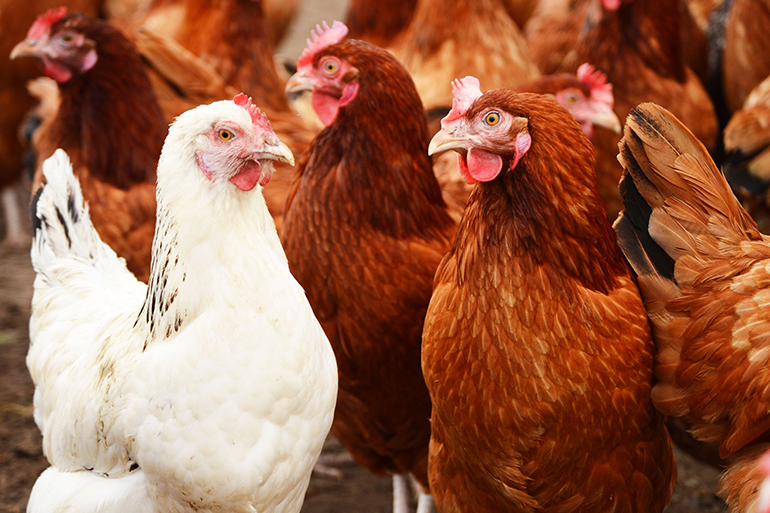What You Need to Know About Keeping Chickens on the East End

At one point in my gardening career, I became a private gardener for a family. I was in charge of the gardens at their house and at another property with a painting studio, which had back-of-the-house gardens, greenhouses and…a chicken house. It hadn’t been used for some time but I put it back into service.
I ordered the chicks from Murray McMurray Hatchery in April and received 25 chicks in the mail. It was the only box that I’ve ever picked up at the post office that peeped! The chicks went into the tub in the bathroom of the studio where I’d set up a light to keep them warm, along with a thermometer to monitor the temperature, food and water containers made especially for chicks and wood shavings for bedding. They stayed there until they began to develop feathers.
Then we built a “teenage” chicken house and pen for them. It had a light for warmth and was like a large box. It also had a door so they could explore the outside when they were ready. When we added new chicks to an existing flock, dividing this pen allowed the two flocks to become acquainted before they actually mixed.
The two pens were fenced and the fence was buried about 18” to deter raccoons and rats from entering the pen. We later added a roof over the pen, after a hawk got one of the chickens.
I learned to keep chickens by just doing it. I read some books and applied common sense. I loved the process—and those chickens! They gave the family a lot of eggs and me a lot of joy. Most chickens are eaten when they stop laying, but not these girls! That was my agreement with the family—that these girls would live out their lives in comfort.

Sometimes when a group of hens is ordered a baby rooster is accidentally included. One day a coworker pointed out that one of the teenage “girls” was trying to crow—so sweet that teenage crowing! We named him Emilio. If he’d become a loud crower and a neighbor complained, we would have needed to find him a new home—but he crowed quietly, so he stayed. The girls did not let him “rule the roost.” He was a Polish and should have had a beautiful topknot of feathers but they pecked his head to keep him in line and the poor guy never got to grow his topknot.
Emilio developed swollen pads on his feet. To the total surprise and shock of my coworkers, we took him to the vet. We were given pills to administer once a day and told to soak his feet in warm water twice a day and keep them bandaged. My coworkers were good chicken handlers so we managed to do this and Emilio was a good sport. But it did not fix the problem. He then had surgery, more pills and soaking of feet. When these treatments did not cure him, we went to another vet who knew that the problem was bumblefoot and gave us the correct medication. Not all vets know about chickens.
I’m a vegetarian, so I might have a different point of view than most people about raising chickens, but I loved doing it! I went from Sag Harbor to Amagansett every day to care for them, cleaned their house every week, brought them green things from the garden, took them to the vet when they didn’t look well and shoveled a path out of the house when there was snow.
Jeanelle Myers is a professional gardener, landscaper and consultant. For gardening discussion you can call her at 631-434-5067. See some of her work at jeanellemyersfinegardening.com



